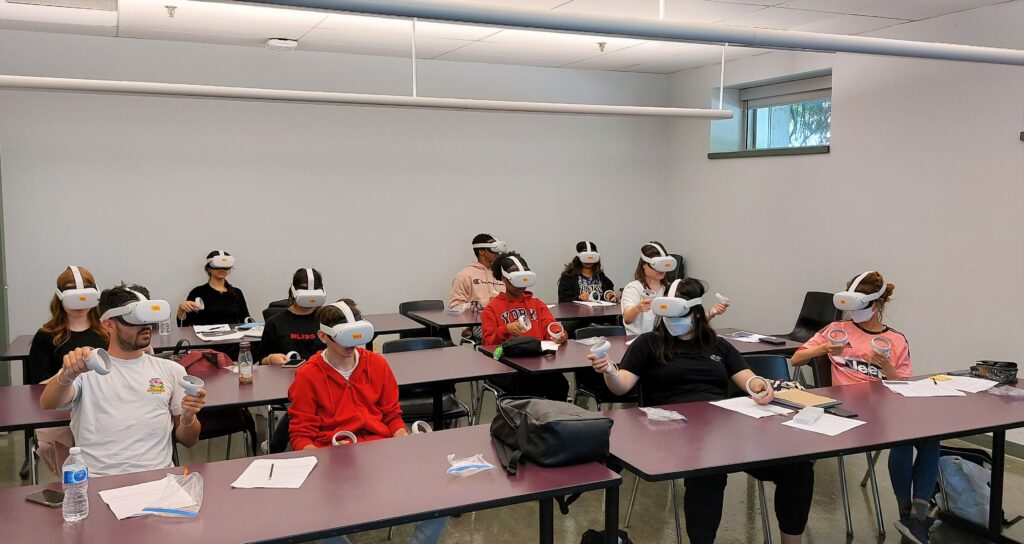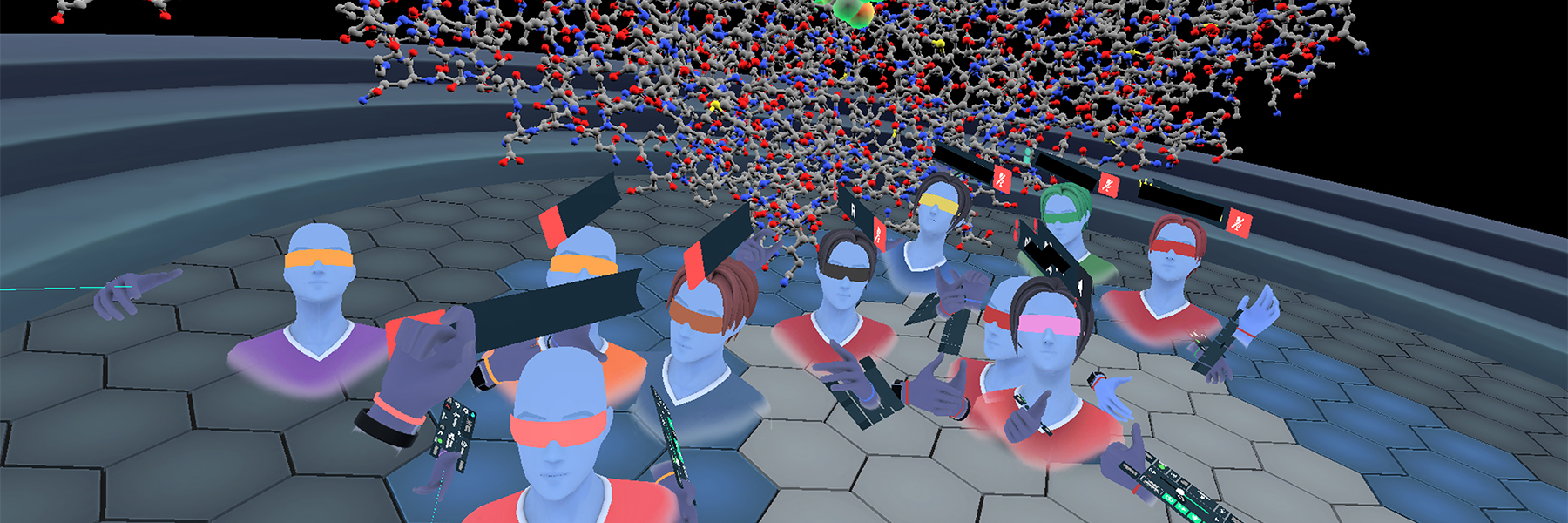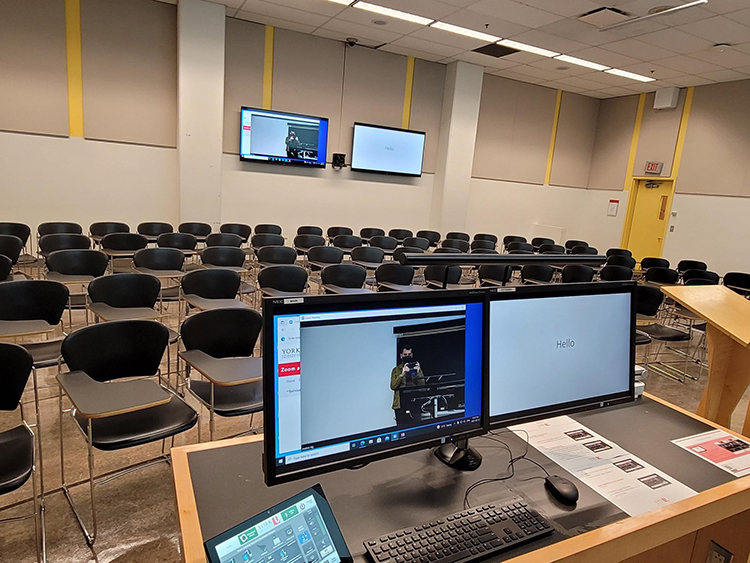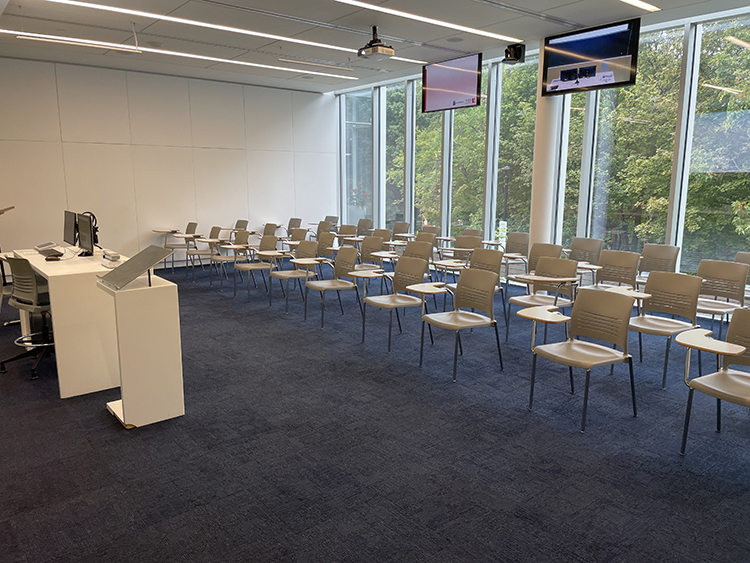Chemistry Professor Kyle Belozerov uses virtual reality (VR) in his classroom. In this insightful Q-and-A, he considers the importance of science, technology, engineering and mathematics (STEM) in understanding the complexities of our modern world.
Kyle Belozerov, an assistant professor of chemistry (teaching stream) and trained biochemist, sees the world through a futuristic lens. He has had a passion for teaching ever since he taught his first class in 2013. Today, he teaches first- and second-year chemistry and biology in the Faculty of Science, and says that having a knowledge of science, technology, engineering and mathematics (STEM) is crucial for understanding today’s complex world.
“Being knowledgeable about the natural world and STEM is extremely important in our time, especially for understanding medicines like vaccines,” he said. “As society progresses, it becomes more important to be educated in STEM disciplines.” Given Belozerov’s use of virtual reality technology in his classroom, “Innovatus” asked for his insights on the future of teaching and learning.

Q: How has teaching changed since you entered the profession?
Belozerov: It’s changed quite a bit! I started 10 years ago and have seen a huge shift towards educational technology and online learning. It has exploded in the last decade, and it has been accelerated, of course, by the pandemic. In 2010, you had a typical classroom with a chalkboard, a PowerPoint and a slide projector. You would sometimes have recorded lectures and interactive technology (clickers). Now you have all of that integrated into a course. Technology has become an integral part of education. The VR headset is going to be the new cell phone, integrated into every classroom.
Q: Will technology allow more flexibility to accommodate different learning styles?
Belozerov: In the subjects I teach, there is a lot of imagination required on the student’s part. Not every student can easily imagine and manipulate complex objects in their mind. It takes time to develop that skill. VR gives them an opportunity to learn how to imagine things, even when away from the technology. With VR, you can rotate an object, stretch it, shrink it. This teaches students how to translate a 2D image into a 3D model in their mind. Technology also accommodates shy students. With highly customizable avatars in VR, students may be more comfortable interacting with peers and professors. Pedagogical and psychological research shows that VR technology allows for greater inclusivity and accessibility.
Q: Is technology (such as VR) the driver of change?
Belozerov: Technology has proven to be a potent driver of change in our everyday activities, social interactions and more. We have seen a social media revolution in the last 10 to 15 years. Cellphones have had a big impact on our everyday life. VR is probably going to be the next phase. Augmented reality (AR) devices turn physical objects around us into interactive information objects. A student can look at a building and instantly find out everything they want to know about that building. What is its purpose? How was it built? What materials were used? This information is easily accessible with AR.

Q: Do students want more agency? Will they direct their own learning more?
Belozerov: We’re not at that stage where the student has the capacity to create their own experiences of VR and AR. We’re only witnessing the beginning of an AR and VR revolution. Every experience in my classroom is well structured and the student follows a pre-designed path in a lesson or project. As they become more familiar with AR/VR technology, they will gain more agency with their learning. I imagine that 10 to 15 years from now, there could be virtual reality universities or completely virtual professional programs.
Q: As the world becomes increasingly more complex, do you think that interdisciplinary courses will become more common with educational technology?
Belozerov: I am a firm believer that VR will allow certain interactions or intersections between different disciplines. The possibilities are limitless with VR: combining physics with music, zoology with arts, STEM with humanities… All these experiences, if they materialize, will be unique, exciting and engaging for students, and beyond anything our traditional classroom offers.
Q: Do you expect courses to become more individualized in terms of deliverables, assessment, etc.?
Belozerov: That would be fantastic, to tailor every course or program of study to the needs of each student. This will be driven by advances in artificial intelligence (AI) and machine learning algorithms. I envision tailored educational programs becoming more widely available to students. You could have a flexible mode of delivery with a fixed course. A student might be able to choose between different delivery models (AR, VR, in-person or online).
Q: How do we balance our need for connection and our need for flexibility with technology?
Belozerov: I think it’s universally acknowledged that the rise of social media has led to some reduction in interpersonal connectivity in real life. I think this can be overcome with better technology. We’re witnessing the beginning of online technologies and how they shape human interactions. Since we’ve seen some negative aspects, we shouldn’t just look at those as inevitable, but instead learn from the negatives and leverage the proven benefits of technology to enhance human interactions.
Q: How do you picture a class session in 2040?
Belozerov: I think that it will be a hybrid physical and virtual meeting, seamlessly connecting participants. I imagine about 20 students in a classroom and 30 in a virtual space. All students would wear an AR/VR device to be in the same virtual space and have unlimited access to audio-visual and textual information. This classroom will have resources available at students’ fingertips. It will be more learner-centred and cross-disciplinary, allowing students from different disciplines to engage in discussions. Students from different countries and cultures will be able to share diverse perspectives with their peers, providing a vibrant inter-cultural learning environment for all. Today’s hyflex classroom is the first generation of this ideal, allowing students who are physically separated to feel that they’re in the same classroom. In the second or third generation of this remote classroom, you would need a VR space. The VR revolution is upon us; it’s here.









